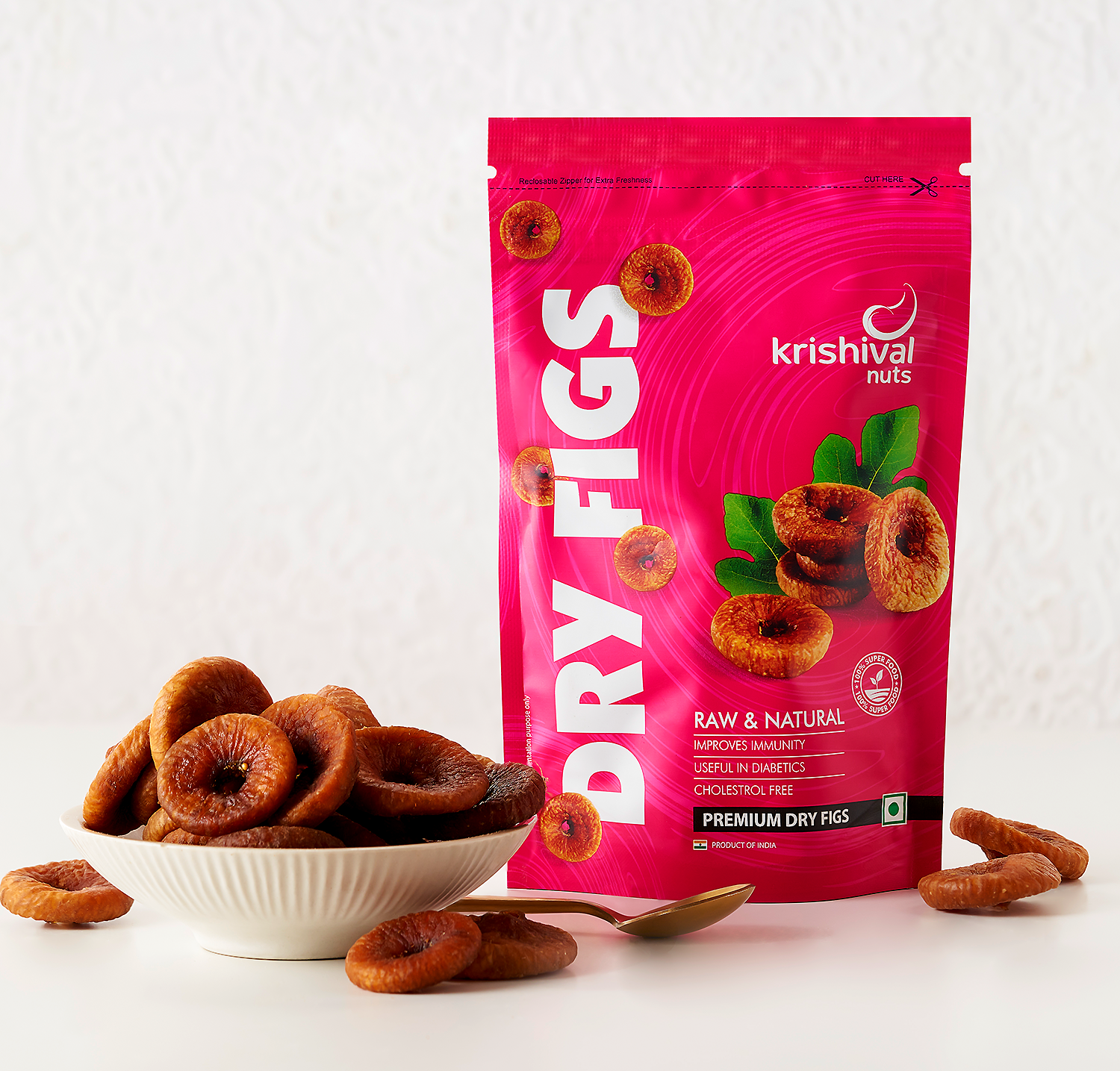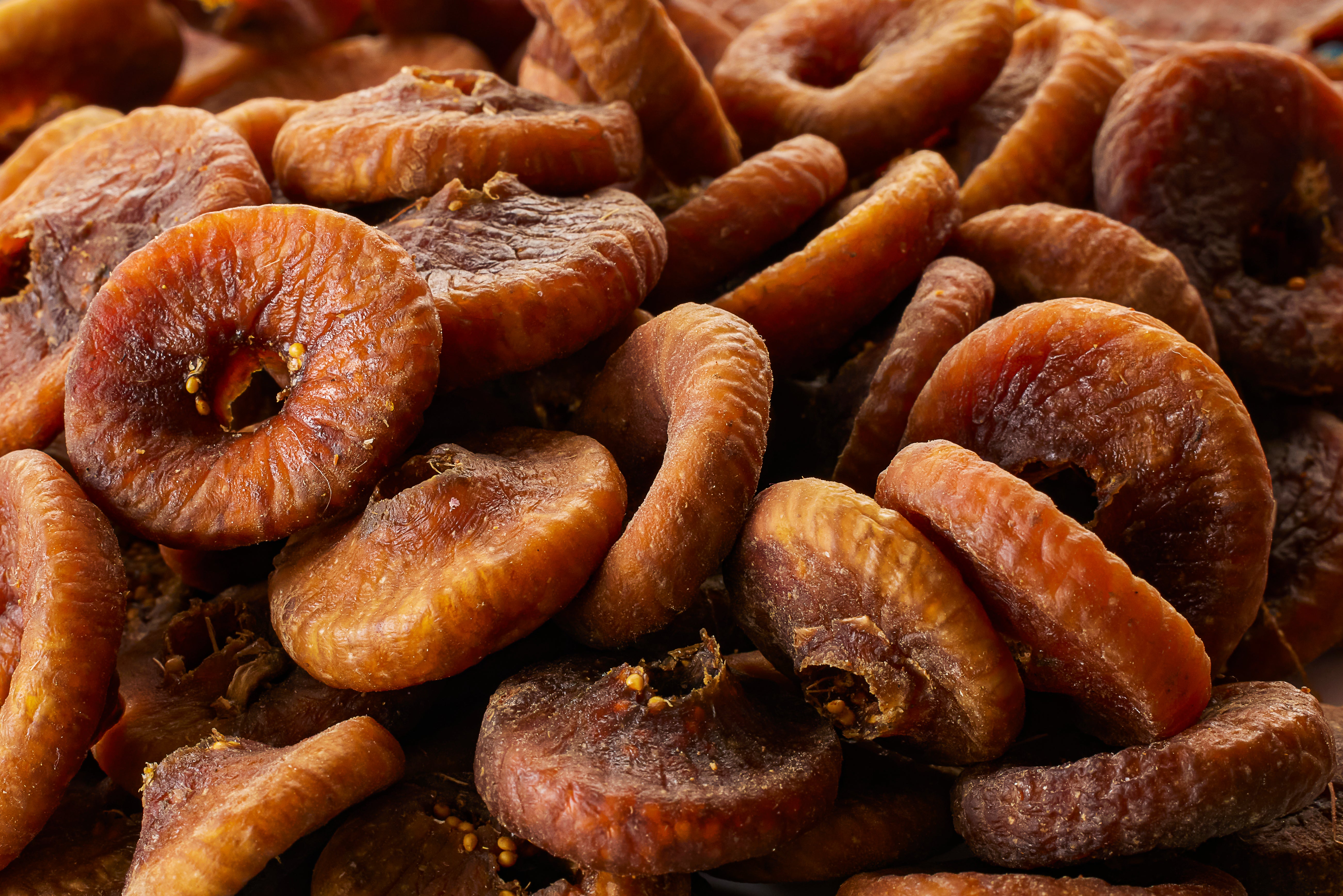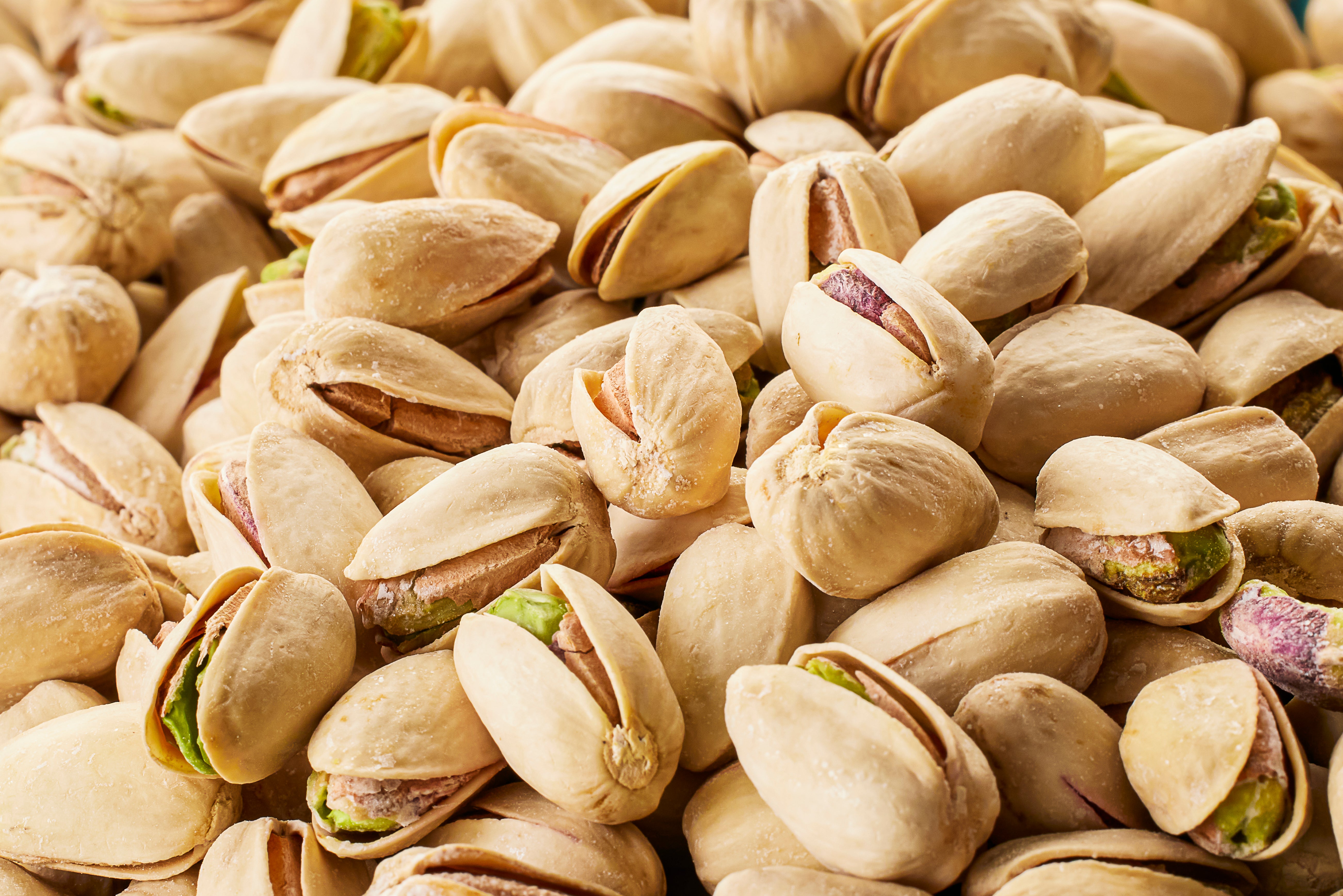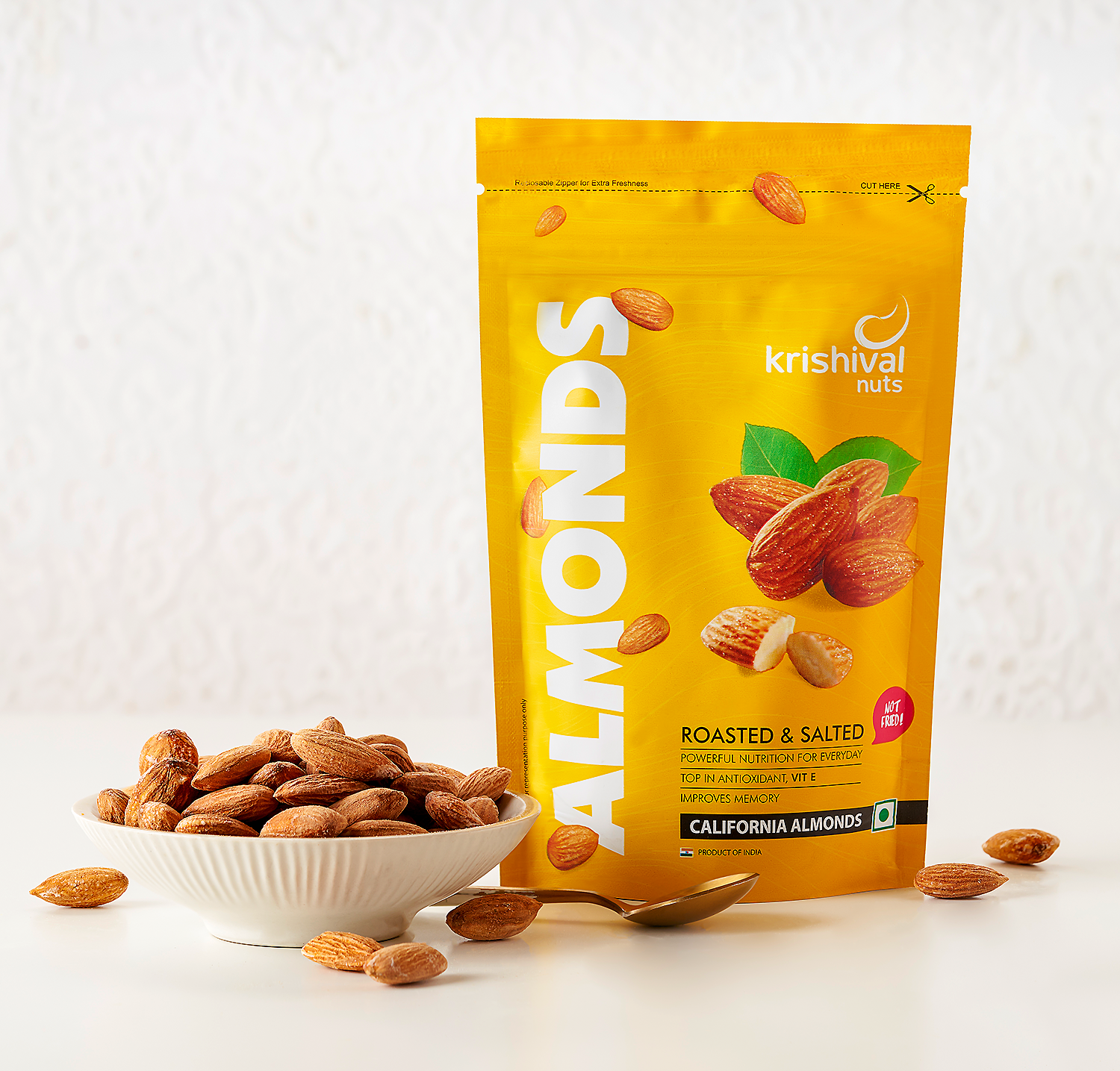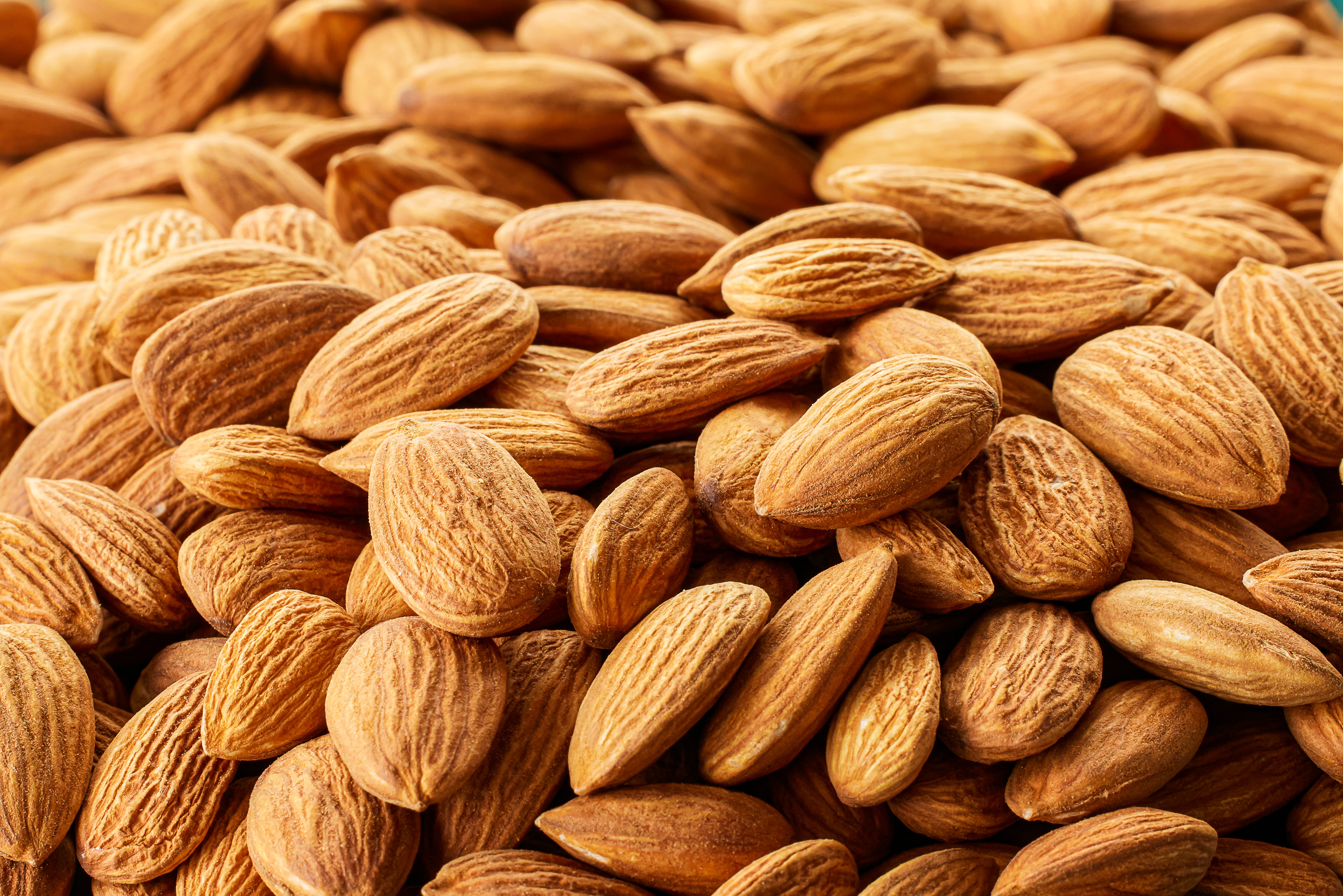Almonds and dry figs are nutritious and delicious staples in many households, but improper storage can significantly reduce their shelf life and quality. Storing them incorrectly can lead to moisture absorption, rancidity, and loss of essential nutrients, making them unappetizing and unsafe to consume. By following proper storage methods, you can preserve their taste, texture, and health benefits for an extended period.
Poor storage conditions can cause almonds to turn stale, develop a bitter taste, or even become rancid due to oxidation. Dry figs, on the other hand, are highly susceptible to mold and hardening when exposed to air and humidity. Storing these foods correctly helps maintain their natural flavors, crunchy or chewy texture, and valuable nutrients such as fiber, antioxidants, and healthy fats.
To keep almonds fresh, they should be stored in airtight containers away from heat and light, with refrigeration being an ideal long-term option. Dry figs require low humidity and cool storage, with refrigeration or freezing being the best choices for extended preservation. This article will explore the best ways to store almonds and dry figs, ensuring they remain fresh and nutritious for as long as possible.
Why Proper Storage of Almonds & Dry Figs is Essential
Nutritional Benefits of Almonds and Dry Figs
Almonds are rich in healthy fats, protein, fiber, and essential vitamins such as vitamin E and B-complex vitamins. They contribute to heart health, improved brain function, and better digestion. Dry figs are packed with dietary fiber, antioxidants, calcium, and iron, supporting digestive health, strong bones, and immune function. However, improper storage can lead to nutrient degradation, reducing their health benefits over time.
How Moisture, Temperature, and Air Exposure Affect Their Shelf Life
Moisture is the biggest enemy of both almonds and dry figs. Excess humidity can cause almonds to turn soggy and promote mold growth in figs. High temperatures accelerate the oxidation process in almonds, leading to rancidity, while exposure to air causes dry figs to lose their natural moisture and become hard.
-
Temperature: Storing almonds and figs at high temperatures speeds up spoilage, whereas refrigeration slows down oxidation and moisture loss.
-
Humidity: High humidity encourages mold growth in dry figs and causes almonds to absorb moisture, affecting their crispness.
-
Air Exposure: Exposure to oxygen causes almonds to go rancid and dry figs to harden. Airtight containers are essential to minimize contact with air.
Signs of Spoilage to Watch For
Identifying spoilage early can help prevent food waste and health risks. Here are key signs that almonds and dry figs have gone bad:
-
Almonds:
-
Bitter or off-putting smell
-
Oily or sticky texture
-
Stale or rancid taste
-
Dry Figs:
-
White mold or fuzzy growth on the surface
-
Hard, shriveled texture due to excessive drying
-
Sour or fermented smell
Proper storage techniques prevent these issues and keep almonds and dry figs fresh for months. The following sections will explore the best ways to store them for both short-term and long-term use.
Best Ways to Store Almonds
3.1 Short-Term Storage (For Daily Use)
When storing almonds for daily consumption, it's essential to protect them from moisture, heat, and air exposure.
Ideal Containers for Freshness
The right storage containers can significantly impact the freshness of almonds. The best options include:
-
Glass jars with airtight lids: Prevents moisture and odor absorption.
-
Airtight plastic or metal containers: Helps maintain freshness and avoids external contaminants.
-
Vacuum-sealed bags: Eliminates air exposure, extending shelf life.
Room Temperature Storage Guidelines
-
Store almonds in a cool, dry place, such as a pantry or cupboard.
-
The ideal temperature for short-term storage is below 75°F (24°C).
-
Keep humidity levels low to prevent mold growth.
Importance of Keeping Them Away from Direct Sunlight and Heat
-
Exposure to heat and sunlight speeds up rancidity.
-
Avoid placing almonds near kitchen appliances that produce heat (e.g., ovens, microwaves).
-
Store them in opaque containers or dark storage spaces to block light exposure.
Long-Term Storage (For Months or More)
If you plan to store almonds for an extended period, refrigeration or freezing is the best option.
Storing Almonds in the Refrigerator
-
Benefits: Refrigeration extends shelf life up to 6-12 months by slowing down oxidation.
-
Best Practices: Store in an airtight container to prevent moisture absorption and odor contamination from other foods.
-
Keep the refrigerator temperature between 32°F and 40°F (0°C-4°C).
Freezing Almonds for Extended Shelf Life
-
Freezing almonds can preserve them for up to 2 years.
-
Almonds should be stored in freezer-safe bags or vacuum-sealed pouches.
-
Label the containers with the date of storage for easy tracking.
-
To use frozen almonds, thaw them at room temperature for a few hours before consuming.
Best Types of Packaging for Freezing to Prevent Freezer Burn
-
Vacuum-sealed bags: Remove air completely to avoid moisture buildup.
-
Heavy-duty freezer bags: Double-seal to prevent freezer burn.
-
Glass containers with tight lids: Avoids exposure to fluctuating temperatures.
Common Mistakes to Avoid When Storing Almonds
-
Using plastic bags without sealing properly: Leads to exposure to air and moisture.
-
Storing near strong-smelling foods: Almonds absorb odors, which affects their taste.
-
Ignoring temperature and humidity changes: Inconsistent storage conditions can cause spoilage.
Best Ways to Store Dry Figs
Short-Term Storage (For Immediate Use)
Proper Storage at Room Temperature
-
Store dry figs in a cool, dark, and dry place.
-
Keep them in original packaging or transfer to an airtight container.
-
Avoid placing figs near windows, stoves, or any warm areas.
Ideal Humidity and Temperature Conditions
-
Room temperature storage is best when kept below 70°F (21°C).
-
Humidity should be kept low to prevent mold growth and stickiness.
Best Containers to Maintain Freshness
-
Glass jars or airtight plastic containers: Prevents moisture exposure.
-
Resealable vacuum-sealed bags: Keeps out air and extends freshness.
-
Paper bags (for short-term use only): Allows slight air circulation but may dry out figs.
Long-Term Storage (For Months or More)
Refrigeration: How to Store Dry Figs Properly in the Fridge
-
Refrigeration keeps dry figs fresh for 6-12 months.
-
Store in an airtight container or vacuum-sealed bag to prevent moisture loss.
-
Avoid storing figs near foods with strong odors.
Freezing Dry Figs: Step-by-Step Guide to Freezing for Extended Shelf Life
-
Step 1: Place figs in a single layer on a baking sheet and freeze for 2-3 hours to prevent clumping.
-
Step 2: Transfer frozen figs to freezer-safe bags or vacuum-sealed pouches.
-
Step 3: Label the bag with the storage date and store at 0°F (-18°C) or below.
How to Thaw Frozen Figs for Best Taste and Texture
-
Refrigerator thawing: Place figs in the fridge overnight.
-
Room temperature thawing: Leave in an airtight container for a few hours before use.
-
Avoid microwaving, as it can make them mushy.
Common Mistakes to Avoid When Storing Dry Figs
-
Leaving figs exposed to air: Leads to hardening and loss of texture.
-
Storing in paper bags or open containers: Increases the risk of moisture exposure.
-
Placing near moisture-prone areas: Encourages mold growth and stickiness.
By following these storage techniques, you can ensure that your almonds and dry figs stay fresh, flavorful, and nutritious for extended periods.
How Temperature & Humidity Affect Storage
The Ideal Storage Temperature for Almonds and Dry Figs
-
Almonds: Best stored at 32°F to 50°F (0°C to 10°C) for long-term freshness.
-
Dry Figs: Ideal temperature range is 35°F to 45°F (1°C to 7°C) to maintain moisture levels.
Recommended Humidity Levels to Prevent Mold Growth
-
Almonds should be stored in a low-humidity environment (below 65%) to prevent spoilage.
-
Dry figs require moderate humidity (50-60%) to keep them from drying out or becoming too sticky.
Seasonal Storage Adjustments
-
Summer: Higher temperatures require refrigeration or vacuum-sealing to maintain freshness.
-
Winter: Room temperature storage is usually sufficient, but avoid excessive dryness.
-
Rainy/Humid Seasons: Store in airtight containers with moisture absorbers to prevent mold.
Packaging Options: What Works Best?
Choosing the right storage container significantly impacts the shelf life of almonds and dry figs. Below is a comparison of different options:

By selecting the appropriate storage method based on your needs, you can maximize freshness and minimize waste.
How to Identify Spoiled Almonds & Dry Figs
Eating spoiled almonds or dry figs can be harmful, leading to digestive issues or even food poisoning. To ensure freshness and quality, look for the following signs of spoilage:
1. Visual Cues
-
Mold Formation: If you notice white, green, or black mold spots on almonds or figs, discard them immediately. Mold growth indicates fungal contamination, which can be harmful if consumed.
-
Discoloration: Fresh almonds have a uniform light brown shell and an off-white kernel inside. If they appear darker, patchy, or have black spots, they may be rancid. Similarly, dry figs should have a natural brownish or golden hue. If they turn excessively dark or develop white crystallization, they might be going bad.
-
Shriveled or Wrinkled Texture: While some natural wrinkling is normal in dried figs, excessive shriveling or extreme dryness could mean they are old and losing moisture.
2. Texture Changes
-
Hardening of Almonds: Almonds that have turned too hard or excessively dry might have lost their natural oils, affecting their flavor and texture.
-
Stickiness in Figs: Fresh dry figs should feel slightly soft and pliable. If they become excessively sticky, slimy, or gooey, they may be fermenting or growing bacteria.
3. Unpleasant Odors & Rancid Taste
-
Smell Check: Almonds should have a mild, nutty aroma. If they emit a sour, musty, or chemical-like smell, it is a strong indication of spoilage due to oxidation.
-
Taste Test: A fresh almond has a slightly sweet, nutty taste. If it tastes bitter, soapy, or unpleasant, it is best to discard it. Rancid almonds contain harmful compounds that can upset the stomach. Likewise, if dry figs have a sour or fermented taste, they are no longer safe to eat.
Quick Hacks to Revive Slightly Stale Almonds & Dry Figs
If your almonds or figs seem a little stale but are not spoiled, you can restore their freshness with these simple hacks:
1. Roasting Almonds for Crunchiness
-
Preheat your oven to 180°C (350°F).
-
Spread almonds on a baking tray in a single layer.
-
Roast for 5-10 minutes, stirring occasionally to ensure even toasting.
-
Let them cool before consuming. This enhances their natural flavors and brings back their crispiness.
Alternatively, you can dry roast them in a pan over medium heat for a few minutes.
2. Soaking Almonds for Improved Taste & Texture
-
Place almonds in a bowl and cover them with fresh water.
-
Let them soak overnight (or for at least 8 hours).
-
Drain and peel off the skin if desired, as it makes them softer and easier to digest.
Soaking not only enhances taste and texture but also helps release beneficial enzymes, making them more nutritious.
3. Rehydrating Dry Figs for Softness
-
Warm Water Soaking:
-
Place dry figs in a bowl of warm water.
-
Let them soak for 30 minutes to an hour.
-
Once softened, drain and use them in recipes or eat them as a snack.
-
Steaming Method:
-
Place dry figs in a steamer for 5-10 minutes.
-
This method quickly restores their natural juiciness.
-
Microwave Hack:
-
Place figs in a microwave-safe bowl and sprinkle a few drops of water.
-
Microwave for 20-30 seconds to regain moisture instantly.
These methods help bring back the natural softness of figs, making them more enjoyable to eat.
By following these simple identification tips and freshness-restoration hacks, you can ensure your almonds and figs remain fresh, tasty, and safe to consume!
Containers and Packaging
Choosing the right storage containers is essential to maintaining the freshness of almonds and dried figs. The right packaging prevents exposure to air, moisture, and light, which can accelerate spoilage.
-
Airtight Containers
-
Use glass or BPA-free plastic containers with tight-sealing lids.
-
Prevents exposure to air and moisture, preserving taste and texture.
-
Ideal for room temperature or refrigerated storage.
-
Vacuum-Sealed Bags
-
Excellent for long-term storage, especially when freezing almonds or dried figs.
-
Removes excess air, reducing the risk of oxidation and spoilage.
-
Keeps nuts and dried fruits fresher for a longer period.
-
Opaque or Dark Containers
-
Protects almonds and figs from exposure to light, which can degrade their quality over time.
-
Best for pantry storage in areas with direct sunlight.
Using the right packaging method can significantly extend the shelf life of almonds and dried figs while preserving their nutritional value.
Signs of Spoilage
To ensure you’re consuming fresh and safe almonds and dried figs, watch out for these signs of spoilage:
Almonds:
-
Rancid or Sour Smell
-
Fresh almonds have a mild, nutty aroma. If they smell sour, musty, or like paint thinner, they have turned rancid due to fat oxidation.
-
Bitter Taste
-
A fresh almond should taste slightly sweet and creamy. If it has a bitter, sharp, or unpleasant taste, it is no longer safe to eat.
-
Discoloration or Mold
-
Dark spots, an unusually oily appearance, or visible mold indicate spoilage. Discard immediately if any mold is present.
Dried Figs:
-
Off or Fermented Odor
-
A sour, musty, or alcoholic smell suggests fermentation, indicating that the figs have started to spoil.
-
Visible Mold
-
White, green, or black mold spots on the surface are a clear sign of spoilage. Even a small amount means the entire batch should be discarded.
-
Excessive Hardness or Dryness
-
While dried figs naturally have a slightly wrinkled texture, they should not be rock-hard. Overly dry figs may have lost too much moisture, making them difficult to eat and less flavorful.
Regularly checking for these spoilage signs ensures that your almonds and dried figs remain fresh, safe, and enjoyable to eat.
Conclusion
Proper storage of almonds and dried figs is essential to maintaining their freshness, taste, and nutritional value. By following the right storage techniques—using airtight or vacuum-sealed containers, keeping them in a cool, dry place, and refrigerating or freezing when necessary—you can significantly extend their shelf life. Regularly checking for signs of spoilage, such as off smells, bitter taste, or mold, ensures that you consume only fresh and safe products.
For those looking for premium-quality, naturally grown almonds and dried figs, Krishival Naturally offers a range of fresh, preservative-free dry fruits. Their products are carefully sourced and packed to retain maximum nutrition and flavor, ensuring you get the best quality every time.
FAQs
Q1. Can I store almonds and dried figs together?
It’s best to store them separately to prevent moisture transfer and cross-contamination of flavors. Almonds require dry conditions, whereas figs retain some moisture, which could lead to spoilage if stored together.
2. Should I wash dried figs before storing them?
No, washing dried figs before storage can introduce moisture, leading to mold growth. Instead, rinse them just before eating.
3. What is the best way to freeze almonds?
Place almonds in an airtight, freezer-safe container or vacuum-sealed bag. Label with the date and store for up to two years to maintain freshness.
4. How can I prevent dried figs from becoming too hard?
Store dried figs in an airtight container in a cool, dark place. If they become too hard, soak them in warm water for 30 minutes before consuming.
5. Can I refrigerate almonds and dried figs in their original packaging?
If the original packaging is resealable and airtight, you can store them in the fridge. Otherwise, transfer them to an airtight container to prevent moisture and odor absorption.
6. How do I know if my almonds have gone rancid?
Spoiled almonds will have a bitter taste and an unpleasant, sour smell. If you notice these signs, discard them immediately.
7. Can dried figs grow mold in the refrigerator?
Yes, if stored in a humid environment or exposed to moisture, dried figs can develop mold even in the fridge. Always use airtight packaging and check for spoilage signs.
8. Do almonds last longer in the fridge or pantry?
Almonds last longer in the fridge, where they stay fresh for up to a year, compared to 6 months in the pantry.
9. What is the best container for storing dried figs?
Use glass or BPA-free plastic airtight containers to keep them fresh and prevent moisture exposure. Vacuum-sealed bags are ideal for long-term storage.
10. Where can I buy high-quality almonds and dried figs?
For premium, naturally sourced almonds and dried figs, Krishival Naturally offers fresh, chemical-free products packed for maximum nutrition and quality.


